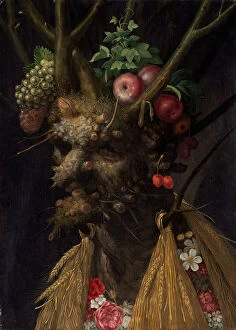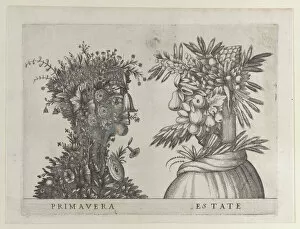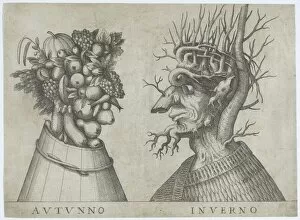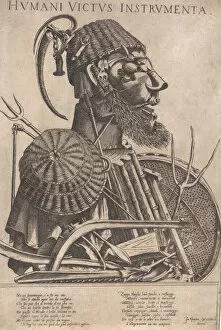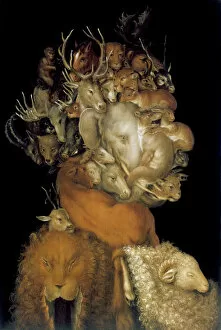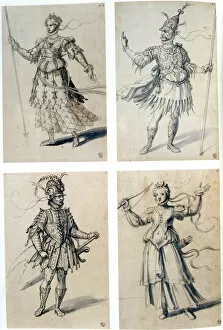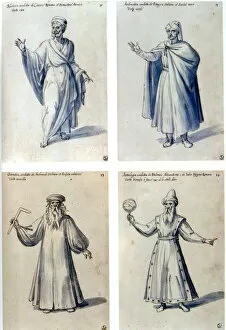Giuseppe Arcimboldi Collection
Giuseppe Arcimboldi, a renowned Italian artist from the 16th century, was a master of creating captivating and unique artworks
All Professionally Made to Order for Quick Shipping
Giuseppe Arcimboldi, a renowned Italian artist from the 16th century, was a master of creating captivating and unique artworks. One of his most famous pieces is "Four Seasons in One Head, " painted around 1590. In this masterpiece, he skillfully combines elements representing each season into a single portrait. It's truly remarkable how he seamlessly blends Spring, Summer, Autumn, and Winter into one harmonious composition. Arcimboldi's talent for incorporating nature into his artwork is evident in "Spring and Summer" as well as "Autumn and Winter. " These two series of heads are adorned with flora typical of their respective seasons. The vibrant colors and intricate details bring these portraits to life, showcasing Arcimboldi's ability to capture the essence of each time of year. Another notable work by Arcimboldi is "Instruments of Human Sustenance (Humani Victus Instrumenta): Agriculture, " created after 1569. This painting depicts various tools used in agriculture throughout history. It serves as a reminder that our sustenance relies on the hard work and dedication of farmers who cultivate the land. One cannot discuss Arcimboldi without mentioning his extraordinary portrait titled "Vertumnus - Rudolf II, " completed around 1590. This piece showcases his exceptional talent for combining different fruits and vegetables to create an astonishingly realistic representation of Emperor Rudolf II. Arcimboldi also explored other themes beyond nature-inspired compositions. His works such as "Winter" (1563), "Fire" (1566), "Earth" (1570), and even costume designs like those for a dragon or cook demonstrate his versatility as an artist. "The Cook, " painted around 1570, exemplifies Arcimboldi's ability to transform everyday objects into extraordinary art forms. By meticulously arranging kitchen utensils to form a human face, he challenges our perception while celebrating culinary craftsmanship.

